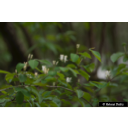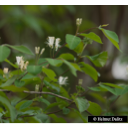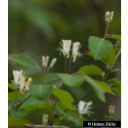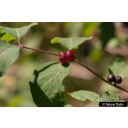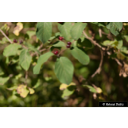Useful information about the taxon (species, subspecies, variety...)
Lonicera xylosteum L. 1753
Caprifoliaceae
(APG IV)fly honeysuckle
Akzessionnummer: SP-ES-041-10335
Pflanzjahr: 2019
Taxon concept: Oberdorfer 2001
Distribution: Europe, Turkey, West Siberia
Size: 1 - 2 (m)Flowering period: IV - VI
Lonicera xylosteum L. - Accepted: Lonicera xylosteum L. bei Oberdorfer 2001; Familie: Caprifoliaceae (APG III)Lonicera xylosteum L. - Accepted: Lonicera xylosteum L. bei The Plant List (2014), version 1.1; Familie: Caprifoliaceae (APG III)Lonicera xylosteum L. - Accepted: Lonicera xylosteum L. bei The Plant List (2014), version 1.1; Familie: Caprifoliaceae (APG IV)Lonicera xylosteum L. - Accepted: Lonicera xylosteum L. bei Schmeil-Fitschen 2019; Familie: Caprifoliaceae (APG IV)Lonicera xylosteum L. - Accepted: Lonicera xylosteum L. bei BfN Checklist Flora DE; Familie: Caprifoliaceae (APG IV)Lonicera xylosteum L. - Accepted: Lonicera xylosteum L. bei World Flora Online - APG IV (Angiosperms); Familie: Caprifoliaceae (World Flora Online - APG IV (Angiosperms))
- Color of flower
- yellowish white
- Life form
- woody, shrub
- Root type
- shallow root system, soil stabiliser
- Natural occurrence (habitat)
- herb-rich oak and beech forests
- Comment to ecology
- resistant to rock salt
- General recommendation
- recommended for beekeeping
Dingermann, T. & Zündorf, I. (2013): Beschreibungen des Neuen Senckenbergischen Arzneipflanzengartens. Online: http://www.pharmazie.uni-frankfurt.de/ Neuer_Senckenbergischer_ Arzneipflanzengarten/index.html.; Erhardt, W., Götz, E., Bödeker, N. & Seybold, S. (2008): Der große Zander. Enzyklopädie der Pflanzennamen. Band 2. Arten und Sorten. Eugen Ulmer KG, Stuttgart (Hohenheim), 18. Aufl., 2103 S.; Frenzel, B. (2006): Heilpflanzen der Äbtissin Hildegrad von Bingen (1098 - 1179 n. Chr. im Botanischen Garten der Universität Hohenheim - ein Beispiel für den langen Gang medizinischer Erfahrungen und Hoffnungen. Hildegard von Bingen - und der Hohenheimer Heilpflanzengarten (Hrsg. Fellmeth, U.); Haider, M. et al. (2005): Wildbienenkataster. See: https://www.wildbienen-kataster.de; Ministerium für Ernährung, Landwirtschaft, Umwelt und Forsten, Baden-Württemberg (Hrsg.) (1985): Pflanzenkatalog zur Verbesserung der Bienenweide und des Artenreichtums (Kurztitel: Bienenweidekatalog); Oberdorfer, E. (2001): Pflanzensoziologische Exkursionsflora. Für Deutschland und angrenzende Gebiete. Eugen Ulmer Verlag, Stuttgart, 8., stark überarb. u. erg. Aufl, 1056 S. 978-3-8001-3131-0.; Pritsch, Günter et al. (2007): 200 Trachtpflanzen erkennen und bewerten.. Kosmos, Stuttgart; Schick, B. & Spürgin, A. (1997): Die Bienenweide. Eugen Ulmer Verlag, Stuttgart, Auflage: 4., völlig neubearb. u. erw. A., 216 S. 978-3800174188.; The International Plant Names Index (2009). Published on the Internet http://www.ipni.org; Courtesy to IPNI, 2009. Exported from IPNI at date: 2009-09-22 20:17:51; Westrich, P. et al. (2018): Die Wildbienen Deutschlands.. Ulmer Verlag ISBN 978-8186-0123-2.;
Diese Webseite verwendet Google Maps, um Karten und Standorte von Pflanzen in den Hohenheimer Gärten anzuzeigen. Dadurch werden unter Umständen Daten an Google weitergeleitet, was mit einer Verarbeitung Ihrer personenbezogenen Daten verbunden sein kann. Die Datenschutzerklärung von Google finden Sie hier: Datenschutzerklärung von Google

